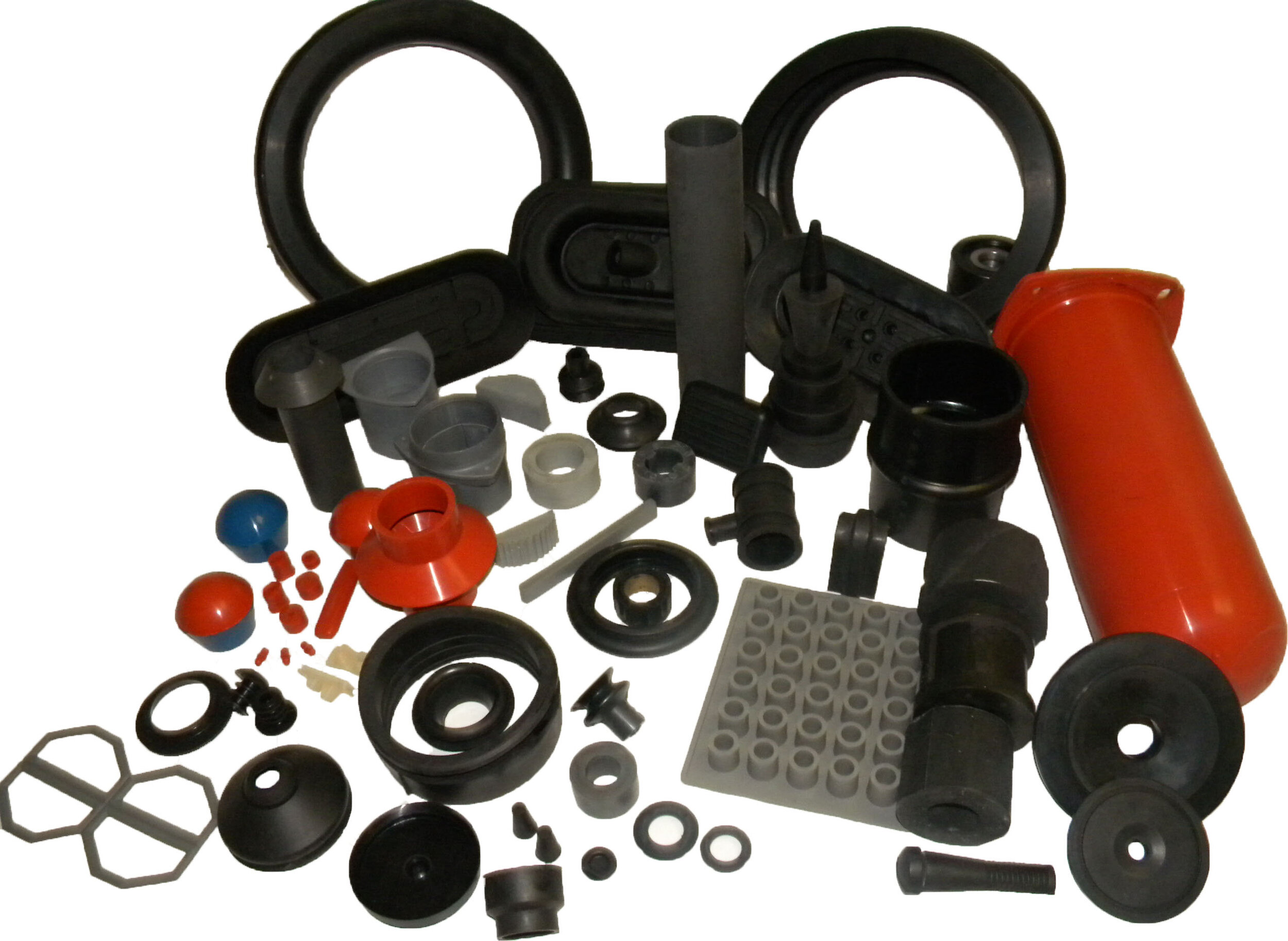CUSTOM MOLDED PARTS
For 3-dimensional items that are specifically designed according to your unique geometry or meticulously reverse engineered from existing parts, East Texas Seals (ETS) offers a wide range of custom molded elastomeric products tailored to your needs. Our team is ready to assist you in every aspect of the process, which includes the selection of the most suitable materials, custom compounding to achieve the desired characteristics, meticulous reverse engineering, geometric design that ensures precision, thorough testing, and much more. We employ all methods of molding such as injection, compression, transfer, and orcomatic to ensure we achieve the optimal part specifically for your application. At ETS, we are dedicated to being your premier supplier of custom molded rubber parts that meet your highest standards!
Common Molded Elastomer Products:
Gaskets
Pads
Bumpers
Bushings
Seals
Washers
Bellows
Grommets
O-Rings
Sleeves
Plugs
Caps
Wipers
Rollers
Fenders
Slabs
Isolators
Anti-Vibration
Wheels
Stoppers
Common Molded Elastomer Materials
Natural Rubber (NR) (Gum) Has excellent mechanical properties. It has excellent tensile, elongation, tear resistance and resilience. It has good abrasion resistance and excellent low temperature flexibility. Without special additives, it has poor resistance to ozone, oxygen, sunlight and heat. It has poor resistance to solvents and petroleum products. Useful temperature range is -67º F to 180º F (-55º C to 82º C).
Nitrile / Buna-N (NBR) (Hycar) (Chemigum) Has excellent physical properties, however its claim to fame is based on its resistance to water, petroleum products and fuels. When compounded properly, it has good low temperature properties as well as good heat resistance. It does not have good ozone, oxygen or sunlight resistance without the addition of special additives. Useful temperature range is -40º F to 275º F (-40º C to 135º C).
Carboxylated Nitrile (CNBR) Has the excellent water, oil and fuel resistance of conventional NBR. It has superior abrasion resistance and load bearing capabilities. It retains good physical properties over a useful temperature range of -40º F to 300º F (-40º C to 150º C).
Hydrogenated Nitrile (HNBR) Has good mechanical properties at elevated temperature. It has excellent resistance to many chemically aggressive technical oils. Its useful temperature range is -40ºF to 300º F (-40º C to 150º C).
Neoprene / Chloroprene (CR) Has excellent physical properties. It is moderately resistant to petroleum products, sunlight, ozone and heat. It is flame resistant and will not support combustion. Useful temperature range is -40º F to 275º F (-40º C to 135º C).
Ethylene-Propylene (EPDM) (EPR) Has outstanding resistance to oxygen, ozone, and sunlight. It's resistant to polar materials such as Phosphate Esters, many ketones and alcohol. It has good electrical properties, low temperature flexibility, excellent heat, water and steam resistance. Its resistance to petroleum products is poor. Useful temperature range is -58º F to 300º F (-50º C to 150º C).
Hypalon (CSM) Has outstanding oxygen, ozone and weather resistance. It has excellent resistance to corrosive chemicals as well as oil and grease. It has excellent abrasion resistance and excellent tensile and elongation. Useful temperature range is -67º F to 320º F (-50º C to 160º C).
Styrene Butadiene (SBR) (BUNA-S) (GRS) Has similar properties to natural rubber. Its resistance to solvents and petroleum products is about the same as natural rubber. Water resistance is better. Without special additives, it is vulnerable to ozone, oxygen and sunlight. Useful temperature range is -67º F to 180º F (-55º C to 82º C).
Silicone Has outstanding resistance to temperature extremes. It has excellent vibration damping, and reasonable physical properties such as tensile and elongation. Tear and abrasion resistance are generally poor. Useful temperature range is -148º F to 600º F (-100º C to 315º C).
Fluoroelastomer (VITON) (FKM) Has good resistance to most chemicals and commercial fluids. It has an outstanding ability to retain strength at elevated temperatures and to withstand embrittlement during long-term heat aging. It has outstanding compression set with ability to recover following deflection at up to 450ºF (230ºC). The temperature range is -22ºF to 450ºF (-30ºC to 230ºC), but will withstand temperatures up to 600ºF (315ºC) for short periods of time.

